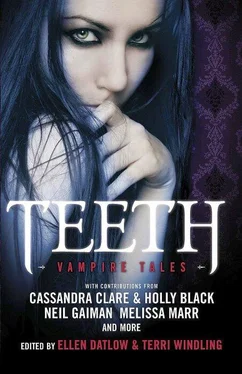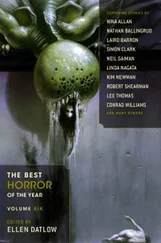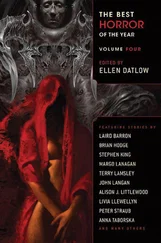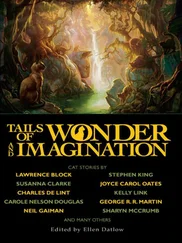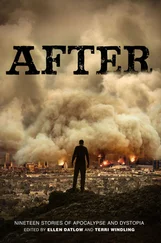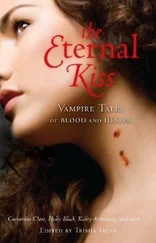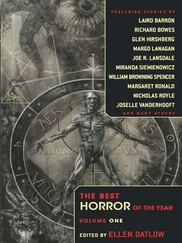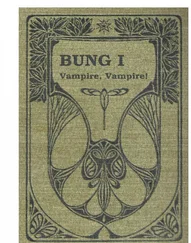The Vampyre , which he then proceeded to publish under Lord Byron’s name. Byron was furious, of course — particularly as the tale’s vampire antihero, Lord Ruthven, was based on Byron himself, and it was not a particularly flattering portrait. But despite (or maybe because of) this scandal,
The Vampyre was a runaway success — first in its initial magazine publication and then in a book edition. Mary Shelley, meanwhile, went on to complete the story she’d begun that same night in Geneva, called
Frankenstein. It, too, is now a beloved classic of Gothic literature.
Following the Byron/Polidori tale, vampire stories by other writers began to appear in print and on the theater stage in London, Paris, and Berlin — some of them (in those days of lax copyright laws) also featuring the Byronic vampire Lord Ruthven in the starring role. In 1828, Elizabeth Caroline Grey published the first known vampire tale by a woman: a Gothic confection called The Skeleton Count, or The Vampire Mistress. Although largely forgotten now, Grey was a prolific, bestselling novelist beloved by women readers, and this brought the vampire legend to an even larger audience. In 1847, a serialized melodrama called Varney the Vampire by James Malcolm Rymer caused the next big vampire sensation. It’s pure soap opera, and about as well written, but Rymer’s story remains an important part of the vampire canon nonetheless — not only because it was hugely popular, but also because we now begin to see vampires portrayed in a more sympathetic light (as creatures tortured by the life they lead), a theme that has since been carried on by writers like Joss Whedon and Stephenie Meyer. Other major additions to the vampire canon at the end of the nineteenth century included Sheridan Le Fanu’s Carmilla (1872), which scandalized readers with its overtones of lesbian eroticism, and a trio of books by the French author Paul Féval: Le Chevalier Ténèbre, La Vampire , and La Ville Vampire (1860–1874).
All these nineteenth-century tales were based on the vampire myths of eastern Europe, made familiar to readers by the vampire hysteria of the previous century. There was no attempt to stay faithful to this lore, however; each writer reshaped and embroidered the legends to suit his or her own purpose. The vampires of myth, for example, are described as hideously bloated in appearance, red of skin and unnaturally fat from feasting nightly on blood and flesh. The literary vampire, by contrast, is generally pale, thin, and aristocratic, with a dark erotic appeal that is largely absent from the old folktales. Many tropes now standard in vampire lore were actually invented in nineteenth-century fiction — such as the vampire’s protruding fangs, his fear of sunlight, his invisibility in mirrors, his association with vampire bats (which are native to South America, not Europe), and his ability to travel as long as he brings his coffin and some native soil with him.
In 1897, a novel was published that would shape our concept of vampires more than any other work before or since. The book, of course, was Dracula , by the Irish author Bram Stoker. Stoker spent years researching the history, myths, and folk beliefs of eastern Europe before writing the novel that would make its title character truly immortal. Stoker was also influenced by Lord Ruthven, Varney, and the other vampires of English Gothic literature — and so his own vampire, Count Dracula (like every popular vampire since), is a hybrid creature: part mythic figure and part literary invention. Dracula’s name was borrowed from a real historical figure, Vlad Draculae (“Vlad the Impaler”), a fifteenth-century Wallachian prince renowned for the sadistic pleasure he took in torturing his enemies. Unlike Vlad Draculae, however, Stoker placed his Count Dracula in the Carpathian Mountains of Transylvania. Vampire legends were known in the region, just as they were known throughout most of eastern Europe and the Balkans, but prior to Stoker’s novel Transylvania had no special association with the creatures of the night. (Serbia, rather than Romania, was the true hotbed of vampire legends.) Stoker’s novel received reasonably favorable reviews, but Dracula was not an immediate success, and it was not until the tale was filmed that its power was fully recognized. Stoker himself didn’t live to see the iconic status his story would attain; he never knew that he’d created a vampire myth so potent and so archetypal that every single vampire tale published since bears the marks of his influence.
In the twentieth century, the vampire craze leapt from the printed page to the cinema screen, as film began to play a major role in the shaping of the vampire legend. Feature films such as Nosferatu (1922), Dracula (1931), and Dracula’s Daughter (1936) rekindled interest in the Gothic tales created in the previous century — and inspired new generations of writers to add to the vampire tradition. Television, too, then played its part. Dark Shadows , a “Gothic soap opera” series, aired on American television in the 1960s and popularized a new kind of vampire who was even more sympathetic than Varney had been: the vampire as romantic hero. Women across America swooned over Dark Shadows ’s Barnabas Collins: a vampire who was dark and dangerous, yes, but also tortured by his fate and capable of love, perhaps even of redemption. Dark Shadows then inspired the enormously popular Barnabas Collins series of books by Marilyn Ross (1966–1971), a precursor of the multi-volume “paranormal romance” series of today.
Stephen King’s Salem’s Lot (1975) brought vampire fiction back to the bestseller lists, closely followed by Interview with the Vampire (1976), the first of the Vampire Chronicles by Anne Rice. These books, set in Maine and New Orleans respectively, did much to establish a uniquely American form of vampire literature, as did The Vampire Tapestry (1980) by Suzy McKee Charnas — although another great American vampire saga, the Saint-Germain series by Chelsea Quinn Yarbro (first published in 1978), remained more firmly rooted in the English Gothic tradition. All these books were influential texts in the early days of the modern goth movement — a subculture that is, remarkably, still going strong, more than thirty years later, and that may prove to be just as enduring as vampires themselves.
From the 1960s forward, the sexuality that had sizzled underneath the text of the vampire fiction published in the nineteenth century was now becoming more and more explicit — in Anne Rice’s steamy novels, for example, and in books like The Hunger (1981) by Whitley Strieber and Laurell K. Hamilton’s Anita Blake: Vampire Hunter series (1993–present). Scholars of Gothic literature point to the rise of the AIDS epidemic as a factor in the popularity of stories linking sex, blood, and death throughout this period. Another big change was afoot, however, for with the dawn of the twenty-first century came an absolute explosion of new vampire fiction — but this time it was not intended for horror fiction shelves. These stories were set in the high school hallways and small towns of modern America and aimed at teenage readers, especially female readers. Why and how this happened can be answered with one word: Buffy.
Yes, there were other contributing factors: the rise of the urban fantasy genre in the 1980s, pioneered by authors like Charles de Lint, Emma Bull, Neil Gaiman, and Mercedes Lackey; the expansion of the young adult publishing field after the phenomenal success of the Harry Potter books in the 1990s; and, of course, the publication of Twilight by Stephenie Meyer in 2005. But it was Joss Whedon’s Buffy the Vampire Slayer (the television series, 1997–2003, not the lackluster movie that preceded it) that blazed the trail for Twilight and the slew of other paranormal romance novels that followed, while also shaping the broader urban fantasy field from the late 1990s onward.
Читать дальше
